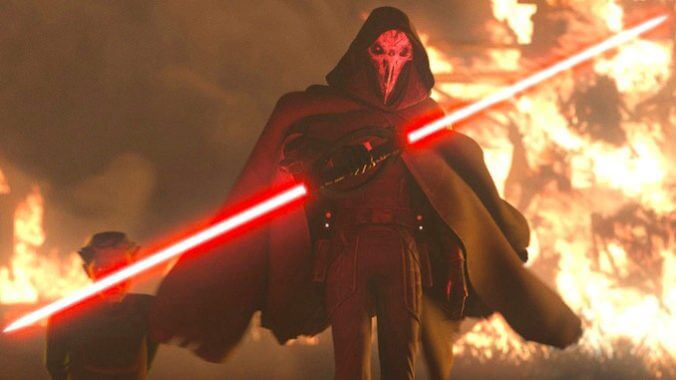Tales of the Jedi Is a Short and Surprisingly Strong Collection of Star Wars Stories
Photo Courtesy of Disney+
Tales of the Jedi offers the perfect mid-point between the childish and mature themes that The Clone Wars navigated. I was deeply surprised. I just wish it were longer.
We’re in a sweet spot for Star Wars TV that I want to feel like is a positive trajectory, but is more likely a singularity. While Andor is blowing our minds with concepts long unseen in A Galaxy Far, Far Away—such as “good writing,” “coherent plot structure,” and “actual characters”—that seems more indicative of a surprising positive development than a trend. Still, with Disney’s vision for Star Wars transitioning from a new movie every winter holiday season to an endless glut of television shows, it’s nice that some of them are memorable. While this production trajectory has gotten special attention lately because of the increased emphasis on live action, Star Wars on TV has been a constant presence since Star Wars: The Clone Wars started in 2008, followed by Star Wars: Rebels from 2014 to 2018 and Star Wars: Resistance from 2018 to 2020, with The Clone Wars getting a third send-off in an eight-episode, two-arc 2020 season. The creator of all those shows and this one is Dave Filoni.
Tales of the Jedi is just one of several spinoffs from The Clone Wars, Dave Filoni’s CG cartoon about the time between Attack of the Clones and Revenge of the Sith. Last year, Disney+ premiered the pretty-good made-for-kids look at the Republic-Imperial transition in The Bad Batch, and they have the upcoming live-action show Ahsoka, which presumably will show fans what the titular character was up to between her last appearance in The Clone Wars and first appearance in The Mandalorian (aside from or including what was already seen in Star Wars: Rebels). Filoni has been deeply involved with much that is good and bad about Star Wars in the last fifteen years, including collaborating with Jon Favreau on The Mandalorian (a mixed bag) and The Book of Boba Fett (mostly trash), and consulting with Deborah Chow on Obi-Wan Kenobi (thoroughly mid). So how does Tales of the Jedi fit into these overlapping and intersecting continuities of corporate creative vision and canonicity?
It’s an assembly of shorts: six distinct episodes, three focused on Ahsoka and three on Count Dooku. It’s also an anthology, like last year’s Star Wars: Visions, but shorter and less connected. Without spoiling anything you wouldn’t know from the trailers, I can say it shows small moments about Ahsoka’s early life and training that weren’t featured in The Clone Wars, and shows parts of Dooku’s backstory unknown to any of us except perhaps those who read Dooku: Jedi Lost. The animation here is in the style of The Clone Wars, but sharper, slightly closer to real life without losing style—in fact, adding texture. So it feels better and more grounded without losing the distinction that makes it a cartoon. With an animation style that could be considered “more mature,” we also get some of the most mature themes in this segment of Star Wars animation. I can’t speak to much of Rebels or any of Resistance, but I’ve seen all of The Clone Wars and The Bad Batch, and these short episodes are some of the most explicit I’ve seen Filoni’s animated Jedi be about corruption in the Republic—at least, some of the least mealy-mouthed and both-sidesy takes.
-

-

-

-

-

-

-

-

-

-

-

-

-

-

-

-

-

-

-

-

-

-

-

-

-

-

-

-

-

-

-

-

-

-

-

-

-

-

-

-








































